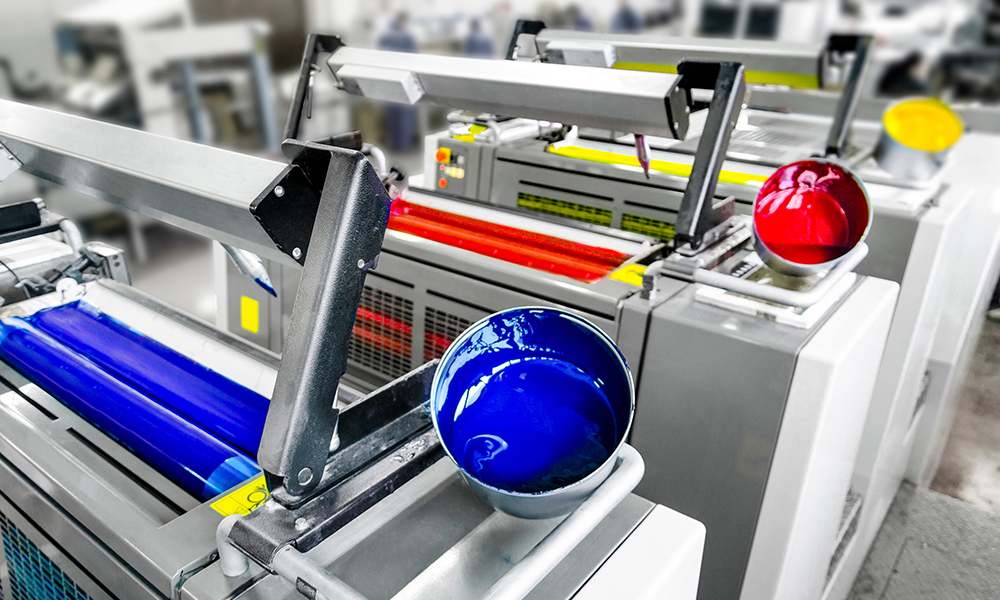A Comprehensive Guide to Understanding Litho Printing Methods
The globe of litho printing, a strategy originating from the late 18th century, is an interesting blend of background, art, science and technology. Keep with us as we journey right into the exciting world of litho printing.
The Historical Advancement of Litho Printing
The historical trajectory of litho printing, a critical innovation in the realm of communication, is a fascinating story of human resourcefulness. Birthed in the late 18th century by Alois Senefelder, this technique was originally a cost-effective approach of publishing theatrical works. Lithography, stemmed from the Greek words for 'stone' and 'to write', used a smooth rock surface area to move photos onto paper. The procedure progressed with the development of the rotating press, which greatly boosted efficiency (litho printing). In the 20th century, the advancement of countered lithography revolutionized the industry, enabling automation of high-quality prints. Each stage of litho printing's development showcases mankind's relentless quest of effectiveness and high quality in aesthetic communication.
Translating the Science Behind Litho Printing Inks
Progressing in the exploration of litho printing techniques, the focus currently changes to the scientific research behind litho printing inks. The make-up of these inks, their drying out process, and color mixing strategies develop the foundation of this complex art kind. Understanding these components is crucial to mastering the craft and attaining the desired print results.
Structure of Litho Inks
In lithographic printing, the essential duty of litho inks can not be overstated. Pigments, the color-providing elements, are finely ground bits put on hold in the lorry, a liquid that brings the pigment onto the printing surface. Each part plays a critical part in the final print's quality, making the accurate formula of litho inks an elaborate science.
Ink Drying Process
From the structure of litho inks, attention turns to the fascinating process of ink drying. The drying procedure is vital, as it influences the last print's top quality and longevity. 2 main approaches are used in litho printing: oxidative drying and absorption. Oxidative drying out involves the ink reacting with oxygen airborne to create a tough, completely dry film. This technique gives a sturdy coating, however can be slower compared to absorption. Absorption, on the various other hand, involves the ink permeating right into the paper fibers, which is a faster process however can lead to much less vivid shades. The option between these methods depends on elements such as print rate requirements, the paper type made use of, and the wanted surface.
Shade Combining Methods
While the drying procedure plays a key function in litho printing, the science of color blending strategies holds equal significance. The scientific research behind litho printing inks additionally takes into account the openness additional info of the ink, which influences just how shades overlay and mix.
The Art and Layout Aspects in Litho Printing
Litho printing breathes life into art and design with its one-of-a-kind components. Litho printing suits a selection of colors, making it possible for artists to develop dynamic and dynamic prints. This mix of accuracy and convenience makes litho printing a favored option for many musicians and developers.
Modern Applications of Litho Printing Techniques
Litho printing strategies have discovered substantial use in the contemporary industrial field. Its impact and value remain to grow with the development of new innovations and innovations in the field. This section will certainly discover these modern applications and the transformative function they play in the printing sector.
Business Litho Printing Utilizes
In today's electronic age, look here one may question the significance of standard printing techniques. Litho printing remains a critical component of the business sector. High-volume printing jobs, such as the production of publications, papers, and packaging, count on litho printing for its capacity to supply superior photo quality and price efficiency. The process, which entails transferring a tattooed picture from a plate onto a rubber blanket and afterwards to the printing surface area, offers unmatched consistency. This makes it optimal for jobs calling for a big print run. Litho printing additionally supplies a wide shade range, above that of digital printing. This makes it the go-to option for tasks that demand vivid, premium shade reproduction.
Developments in Litho Printing
Pushing the boundaries of traditional strategies, modern improvements have fueled a host of technologies in litho printing. One prominent development is digital litho printing, which combines the virtues of electronic modern technology with litho's high-quality outcome. These developments highlight the long-lasting relevance of litho printing in the modern globe.
Discovering the Process of Litho Printing: Action by Action

Difficulties and Solutions in Contemporary Litho Printing

Regardless of the precision and tradition that litho printing happily supports, it is not without its collection of contemporary obstacles. Digital litho printing allows for economical short runs and very easy customization, attending to the concern of variable information. Hence, while there are challenges, the litho printing market is proactively adjusting to satisfy them head-on, ensuring its relevance in the future.
Final thought
In navigate to this site verdict, litho printing, with its rich history and scientific intricacies, holds a significant area in the print market. The future of litho printing hinges on its ability to adjust to these altering needs, verifying its enduring value in an evolving market.
